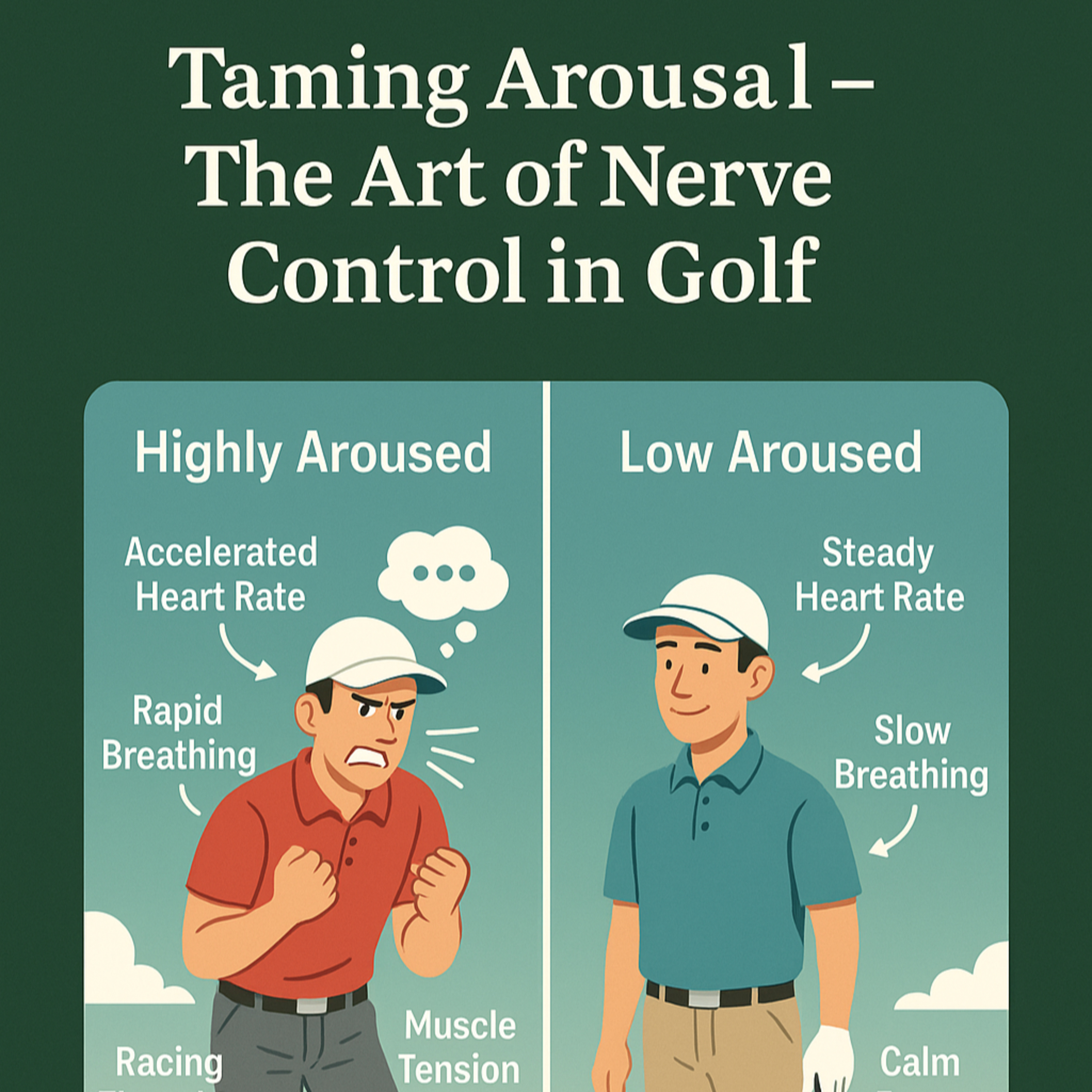#316 Taming Arousal – The Art of Nerve Control in Golf
- Author
- Golf247.eu
- Published
- Fri 15 Aug 2025
- Episode Link
- https://podcasters.spotify.com/pod/show/puttin-pro/episodes/316-Taming-Arousal--The-Art-of-Nerve-Control-in-Golf-e36s6kl
In golf, performance is determined not only by technique but also by a player’s ability to control internal arousal. This state is regulated by the autonomic nervous system: the sympathetic branch prepares the body for “fight or flight,” while the parasympathetic branch promotes relaxation. When the system becomes unbalanced, experts speak of an “electrical storm” in the brain—heart rate, blood pressure, breathing rate, and muscle tension rise, thoughts race, and concentration collapses.
The Consequences on the Course:
Over-arousal leads to rushed swings, loss of timing, increased errors, reduced frustration tolerance, and poor decision-making. Under-arousal, on the other hand, can cause a lack of focus and drive. Most golfers are over-aroused and must learn to “dial down” their nervous system.
Main Triggers:
- Future Thinking: Score calculations, planning ahead, everyday hurry.
- Anger & Frustration: After poor shots or during slow play.
- Fear: Of an audience, failure, certain shots.
- Excessive Excitement: Premature confidence can trigger the same stress as fear.
- Everyday Stress: Time pressure, lack of sleep, constant tension.
- Physiology & Personality: Caffeine intake, high-strung temperament, perfectionism.
Key Indicators:
The high-arousal player thinks quickly, breathes shallowly, moves hastily, is irritable and future-focused. The low-arousal player is relaxed, moves slowly, remains present—but must increase activation to reach peak performance.
Strategies for Regulation:
1. Breathing
Deep diaphragmatic breathing, with an exhalation twice as long as the inhalation, activates the parasympathetic system. It lowers heart rate, relaxes muscles, and sharpens focus. Practicing regularly—not just on the course—is essential. Tour pros like Fuzzy Zoeller even whistle to encourage deep breathing.
2. Slowing Movement
Walk more slowly, soften club movements, maintain a smooth and even swing rhythm. Ray Floyd described peak performance as “half-speed.”
3. Mindfulness
Bring focus to the present moment, observe thoughts without emotion, and return attention to the task at hand. On the course: move from a wide focus (strategy) to a narrow focus (shot execution) and widen it again afterward.
4. Visualization
Positive images of past successes or the desired shot boost confidence and relaxation. Negative imagery raises arousal and reduces performance.
5. Routine & Body Language
A consistent pre-shot routine shields against distraction. An “as if” posture (shoulders back, head up, smiling) positively influences internal state.
6. Stretching & Biofeedback
Stretching releases muscle tension; biofeedback teaches conscious relaxation.
Core Message:
Jack Nicklaus called confidence the greatest tension reliever. Knowing your optimal arousal range and consistently training these techniques rewires the nervous system—enabling calm precision under maximum pressure.
